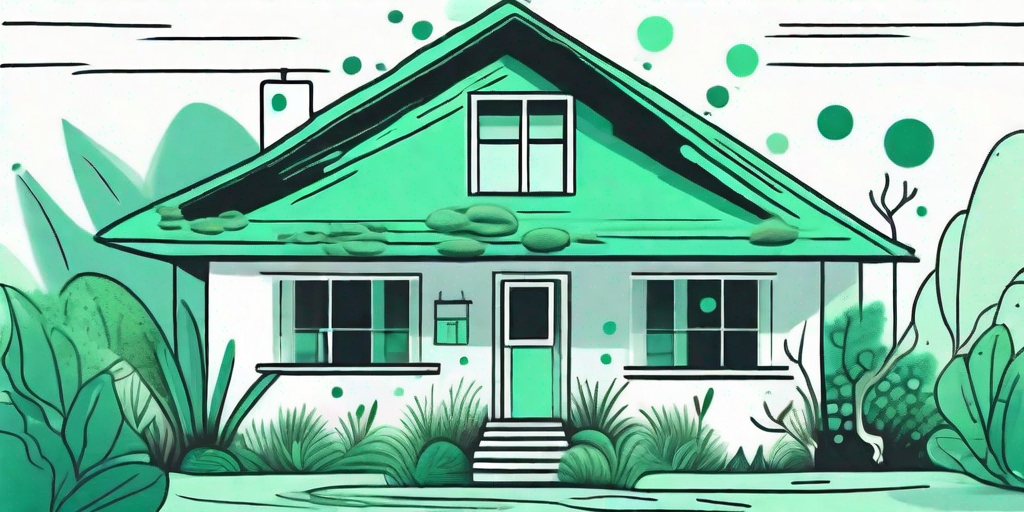
Artillery fungus, also known as "shotgun" or "cannon" fungus, is a pesky little critter that can wreak havoc on your home and garden. But fear not, dear reader, for we have the ultimate solution to rid your home of this fungal foe once and for all. So sit back, relax, and prepare to launch your counterattack against the artillery fungus.
Understanding the Enemy: What is Artillery Fungus?
Before we dive into the battle plan, let's take a moment to understand our enemy. Artillery fungus, scientifically known as Sphaerobolus stellatus, is a type of fungus that thrives in mulch and other organic matter. It gets its name from its unique ability to "shoot" its spores up to several meters away, hence the artillery reference. Cheeky little thing, isn't it?
These spores can stick to various surfaces, including your home's siding, windows, and even your beloved car. They appear as tiny, black specks and can be quite difficult to remove. But don't despair, we've got the ultimate solution for you.
Identifying Artillery Fungus
Now that we know what we're dealing with, it's time to confirm if you indeed have an artillery fungus problem. Look out for tiny black specks on your home's exterior surfaces. These specks are usually 1 to 2 millimeters in diameter and have a sticky, tar-like consistency. If you try to remove them, you'll find they're quite stubborn. They're like the unwanted house guests of the fungal world.
Another sign of artillery fungus is a white, cup-like structure in your mulch or organic matter. This is the fungus's fruiting body, from which it launches its spores. If you see these, it's time to prepare for battle.
The Ultimate Solution: How to Get Rid of Artillery Fungus
Alright, now that we've identified the enemy, it's time to launch our counterattack. Here's a step-by-step guide to rid your home of artillery fungus:
-
Remove the Infected Mulch: Start by removing the mulch or organic matter where the fungus is growing. Be sure to dispose of it properly to prevent the fungus from spreading.
-
Clean the Infected Surfaces: Next, clean the surfaces where the spores have stuck. This can be a bit tricky, as the spores are quite stubborn. You may need to use a pressure washer or a special cleaning solution.
-
Replace the Mulch: Once you've cleaned up, replace the old mulch with new, fungus-free mulch. Alternatively, you can use inorganic mulch, such as gravel or rubber, to prevent future infestations.
-
Regular Maintenance: Finally, keep an eye on your mulch and surfaces to catch any future infestations early. Regular maintenance is key to keeping your home fungus-free.
Preventing Future Infestations
Now that we've dealt with the current infestation, let's talk about prevention. After all, the best defense is a good offense, right? Here are some tips to prevent future artillery fungus infestations:
-
Use Inorganic Mulch: As mentioned earlier, inorganic mulch like gravel or rubber is less likely to harbor artillery fungus.
-
Regularly Turn Your Mulch: If you prefer organic mulch, make sure to turn it regularly. This disrupts the fungus's life cycle and prevents it from launching its spores.
-
Keep Mulch Away from Vulnerable Surfaces: Try to keep mulch away from your home's siding, windows, and other surfaces where the spores could stick.
Frequently Asked Questions
Can Artillery Fungus Hurt Me or My Pets?
While artillery fungus is a nuisance, it's not harmful to humans or pets. However, it can cause damage to your home and property, so it's best to deal with it promptly.
Can I Use Fungicides to Kill Artillery Fungus?
Unfortunately, there are currently no fungicides that are effective against artillery fungus. The best way to deal with it is through proper mulch management and cleaning of infected surfaces.
How Long Does It Take to Get Rid of Artillery Fungus?
The time it takes to get rid of artillery fungus can vary depending on the extent of the infestation. However, with diligent cleaning and mulch management, you should be able to get rid of it within a few weeks.
Conclusion
There you have it, folks. The ultimate solution to a fungus-free home. With a bit of knowledge, some elbow grease, and a dash of humor, you can say goodbye to artillery fungus for good. So go forth, dear reader, and reclaim your home from this fungal foe. After all, your home is your castle, and no castle should be under siege by artillery fungus.















